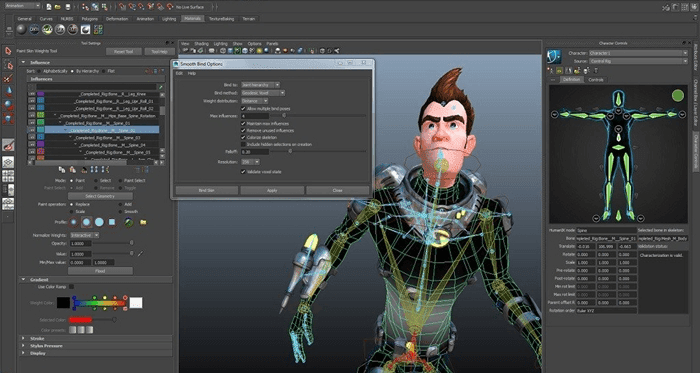Computer Animation
What Does a Computer Animator Do?
Computer animators use programs such as Autodesk, Lightwave, Maya, Softimages, Photoshop, and Corel Draw to create realistic movement for characters in a variety of mediums. The characters may appear as two dimensional (2D) or three dimensional (3D), although many in the field of computer animation now work with 3D graphics exclusively. Software manufacturers continually upgrade programs, which makes staying on top of industry developments an essential component of success. The following are some areas of specialization within the field of computer animation:
Character Animation
Compositing
General Animation
Lighting
Textures
Computer animation is the art of creating moving images via the use of computers. It is a subfield of computer graphics and animation. Increasingly it is created by means of 3D computer graphics, though 2D computer graphics are still widely used for low bandwidth and faster real-time rendering needs.
3D computer graphics:
3D computer graphics or three-dimensional computer graphics (in contrast to 2D computer graphics), are graphics that use a three-dimensional representation of geometric data (often Cartesian) that is stored in the computer for the purposes of performing calculations and rendering 2D images. Such images may be stored for viewing later or displayed in real-time.
2D computer graphics:
2D computer graphics is the computer-based generation of digital images—mostly from two-dimensional models (such as 2D geometric models, text, and digital images) and by techniques specific to them.The word may stand for the branch of computer science that comprises such techniques or for the models themselves. 2D computer graphics are mainly used in applications that were originally developed upon traditional printing and drawing technologies, such as typography, cartography, technical drawing, advertising, etc. In those applications, the two-dimensional image is not just a representation of a real-world object, but an independent artifact with added semantic value; two-dimensional models are therefore preferred, because they give more direct control of the image than 3D computer graphics (whose approach is more akin to photography than to typography)
Real-time computer graphics:
Real-time computer graphics or real-time rendering is the sub-field of computer graphics focused on producing and analyzing images in real time. The term can refer to anything from rendering an application's graphical user interface (GUI) to real-time image analysis, but is most often used in reference to interactive 3D computer graphics, typically using a graphics processing unit (GPU). One example of this concept is a video game that rapidly renders changing 3D environments to produce an illusion of motion.
Computer-Generated Imagery:
Computer-generated imagery (CGI) is the application of gogouse computer graphics to create or contribute to images in art, printed media, video games, films, television programs, shorts, commercials, videos, and simulators. The visual scenes may be dynamic or static and may be two-dimensional (2D), though the term "CGI" is most commonly used to refer to 3D computer graphics used for creating scenes or special effects in films and television. Additionally, the use of 2D CGI is often mistakenly referred to as "traditional animation", most often in the case when dedicated animation software such as Adobe Flashor Toon Boom is not used or the CGI is hand drawn using a tablet and mouse.





